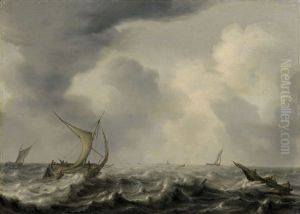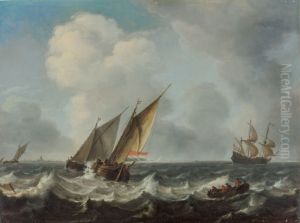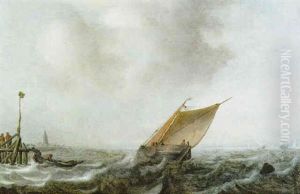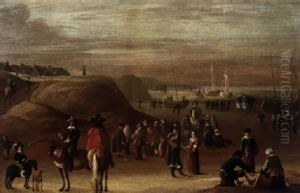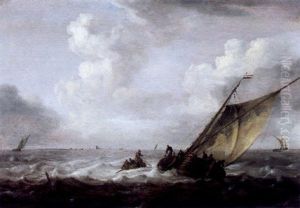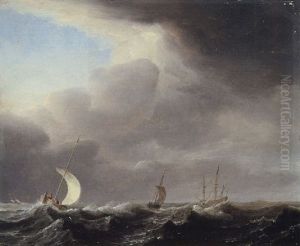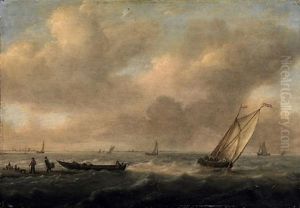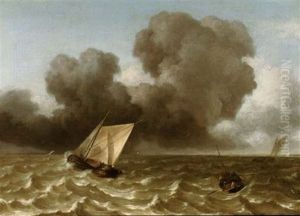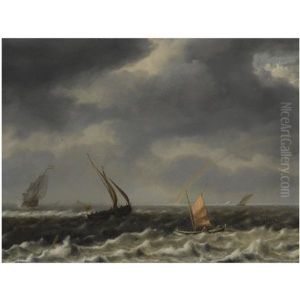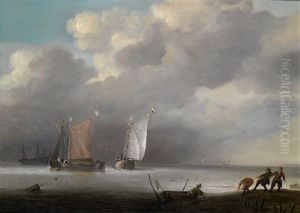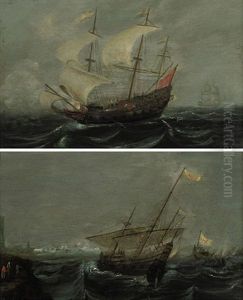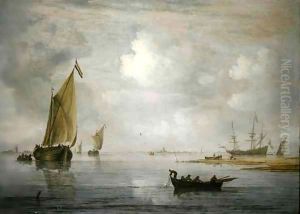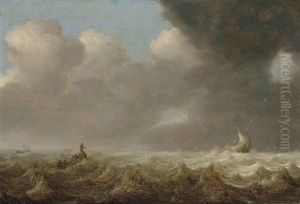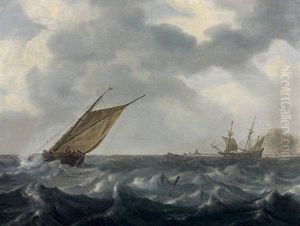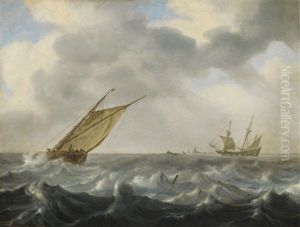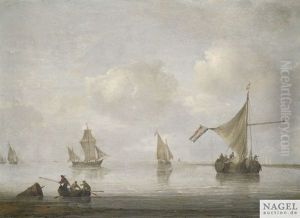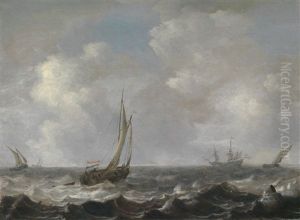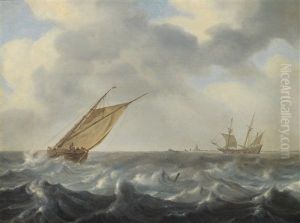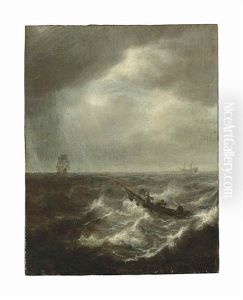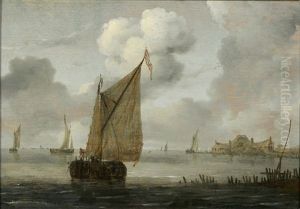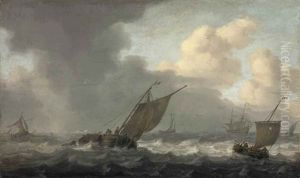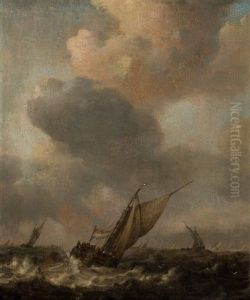Arnoldus van Anthonissen Paintings
Arnoldus van Anthonissen was a Dutch painter active during the 17th century, a period often referred to as the Dutch Golden Age. Born in 1631, Anthonissen contributed to the rich tapestry of Dutch maritime painting, a genre that reflected the Netherlands' ascendancy as a naval and commercial power. While not as universally recognized as some of his contemporaries, such as Rembrandt or Vermeer, Anthonissen's works nonetheless offer valuable insights into the maritime culture and landscape of his time.
His life and career were deeply intertwined with the city of Haarlem, where he was both born and active. Anthonissen specialized in seascapes and beach scenes, capturing the dynamic interaction between the sea and those who lived by it. His paintings often depicted ships, fishermen, and coastal landscapes, rendered with attention to atmospheric effects and the nuanced play of light, typical of Dutch Golden Age painting. Despite the specificity of his maritime subjects, Anthonissen's work is noted for its broader appeal, due to his skill in capturing the universal qualities of light, space, and water.
Anthonissen's contributions to art were part of a broader movement in the Netherlands that saw a flourishing of painting across various genres, including still life, portraiture, and landscape. His works are characterized by their technical skill and the emotional depth they conveyed, capturing the majesty of the sea and the rugged beauty of the Dutch coastline. Arnoldus van Anthonissen passed away in 1703, leaving behind a body of work that continues to be appreciated for its artistic and historical significance. Today, his paintings can be found in various museums and collections, serving as a testament to the enduring legacy of Dutch maritime painting.
